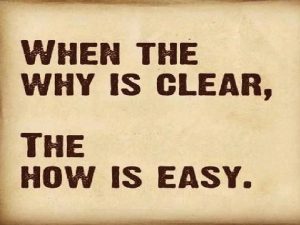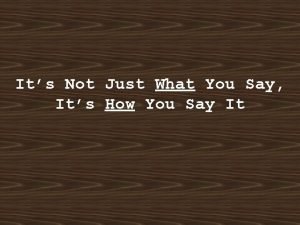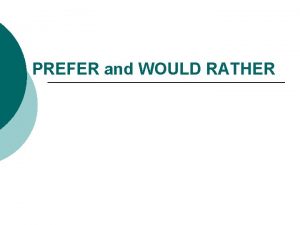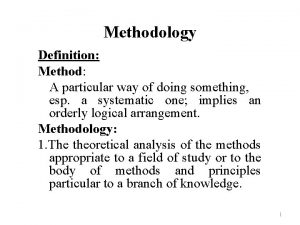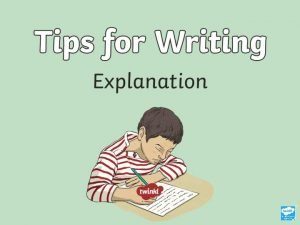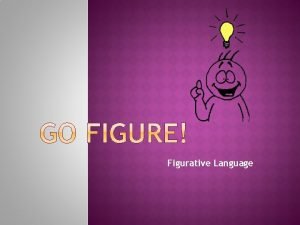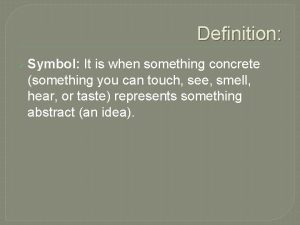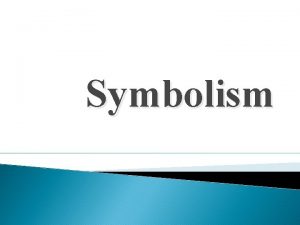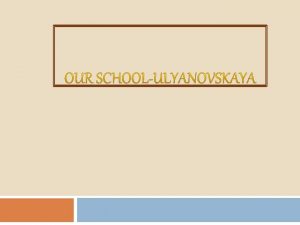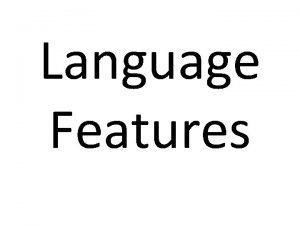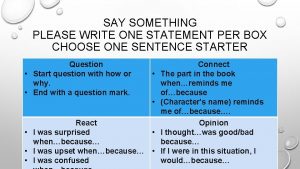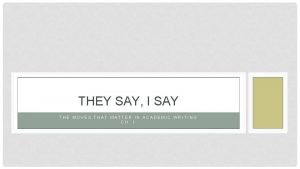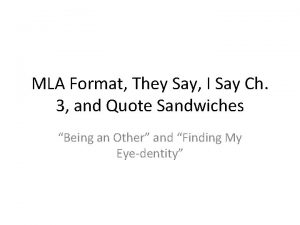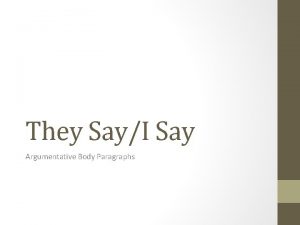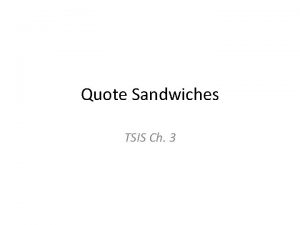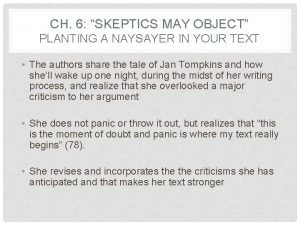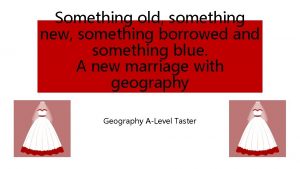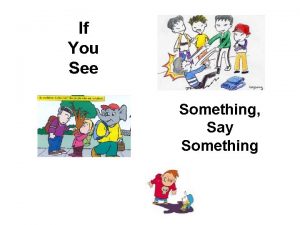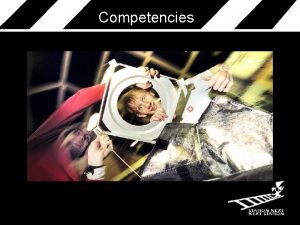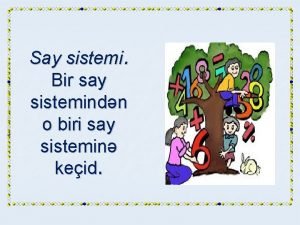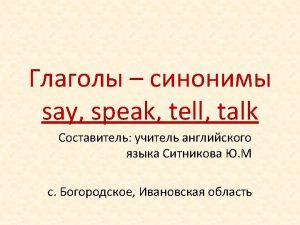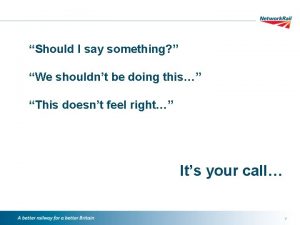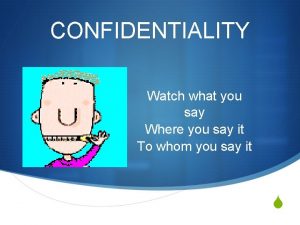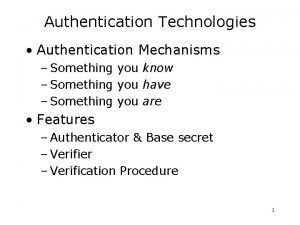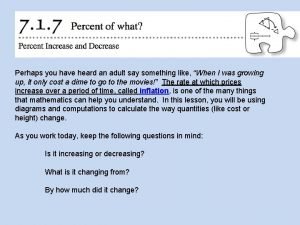When you say you are doing something you


























- Slides: 26


� When you say you are doing something you are using the present progressive. � In Spanish, you form the present progressive by using the verb ESTAR and the present participle.

� add - ANDO : hablando � add - IENDO : comiendo; viviendo Estoy Estamos Estáis Están

� When the stem of an –er or –ir verb ends in a vowel, the present participle ends in –yendo. � Examples: Leer: Leer (le) leyendo Oír: Oír(o) oyendo Traer: Traer (tra) trayendo

� Ir, poder, and venir have irregular present participles. � Ir: yendo � Poder: pudiendo � Venir: viniendo



Estamos practicando deportes. Carmen está comiendo en casa. Nuestro equipo está ganando el partido. Estoy leyendo el periódico. Está pensando comprar una bicicleta roja. Están jugando a las cartas. Están durmiendo. Está leyendo correo electrónico. Estoy preparando sándwiches. Está tomando fotos. ¿Estás durmiendo?

Present Progressive: Translate the following: • I am taking pictures at the airport. (Yo)Estoy sacando fotos en el aeropuerto. • You are talking to the travel agent. (Tú)Estás hablando con el agente de viajes. • He is running on the beach. (Él)Está corriendo en la playa. • We are writing our reservation. (Nosotros)Estamos escribiendo nuestra reservación. • Y’all are riding a horse in the countryside. (Ustedes)Están montando a caballo en el campo. • The travelers are packing the suitcases. Los viajeros están haciendo las maletas.

Present Progressives with Direct Object Pronouns Ex. I am packing it. (the suitcase) La estoy haciendo. / Estoy haciendola. • They are buying it. (the calculator) La están comprando. / Están comprandola. • He is asking for it. (the passport) Lo está pidiendo. / Está pidiendolo. • We are watching them. (the girls) Las estamos viendo. / Estamos viendolas. • Y’all are eating them. (the shrimp) Los están comiendo. Están comiendolos. • The students are attending it. (the meeting) La están asistiendo. Los estudiantes están asistiendola.


Saber sé sabes sabemos sabéis saben

To know: • Facts and information • Used with question words. • To know how to do something – (followed by an infinitive) Example: • Tú sabes todas las canciones de Beyoncé. • Ella sabe cuando es mi cumpleaños. • Yo sé hablar español.

Conocer Conozco conocemos Conoces conocéis conocen

conocer • Conocer: to know or be familiar with a place. • Being familiar with a subject or someone’s work. Ex. Mi profesora conoce los poemas famosos de Maya Angelou. • Conocer a: to know or be acquainted with a person. • If what is known is a person, then the personal “a” is needed. conocemos a Shakira. Nosotros _____ conoces ¿Tú _____el restaurante La Parrilla? conoce ¿Ella _______ Savannah, GA? conozco a Yo _______ la profesora nueva.

Los verbos reflexivos

YOU NEED THESE PRONOUNS me te se nos os se


HOW DO YOU GET THOSE FORMS? The infinitive has se attached to it to show that the subject is doing something to him/herself in order to get ready. Drop the ‘se’ Change the verb ending Put the appropriate -ar, -er, or –ir conjugation of the verb. Add the appropriate reflexive pronoun in front of the conjugated verb.

EX. LAVARSE CONJUGATED: Me lavo Te lavas nos lavamos os laváis Se lava se lavan The endings are still the same. In this case, these are endings for regular “ar” verbs in the present tense.

SENTARSE (E: IE STEM-CHANGING VERB) Yo me siento Tú te sientas Él se sienta Nosotros nos sentamos Vosotros os sentáis Ellos se sientan

PONERSE (-GO VERB) Yo me pongo Tú te pones Él se pone Nosotros nos ponemos Vosotros os ponéis Ellos se ponen

A VERB FOLLOWED BY A REFLEXIVE VERB: • Remember that in a sentence when there are 2 verbs next to each other, you conjugate the first verb and leave the second verb in its regular form. (Ex. Yo necesito trabajar. ) The rule is a little different when a verb is followed by a reflexive verb. *Instead of placing the reflexive pronoun in front of the verb, you will leave it attached to the infinitive and change it so that it agrees with the subject. Some examples: Tú necesitas levantarte. / Yo necesito maquillarme. / Ana necesita levantarse.

WITH PREPOSITIONS When using a verb after a preposition such as para, antes de, después de, etc. , do NOT conjugate the verb. For example: Antes de comer, me cepillo los dientes. (Before eating, I brush my teeth. ) Remember that when using the infinitive of a reflexive verb, you attach it to the end. For example: Antes de lavarme la cara, me lavo las manos. (Before washing my face, I wash my hands. )

Fill in the blanks with the correct forms of the reflexive verbs. te cepillas 1. Tú __________ (cepillarse) se acuestan 2. Elena y tú _______(acostarse) me visto 3. Yo _________ (vestirse) afeitarse 4. Los chicos quieren_______(afeitarse) nos arreglamos (arreglarse) 5. Sara y yo _______ bañarse 6. Paco necesita ________ (bañarse) me siento 7. Yo _________ (sentirse) se despiertan 8. Ellos________ (despertarse) levantarnos (levantarse) 9. Ana y yo necesitamos _______ se lava 10. Marta ________ (lavarse)

¿QUÉ HACEN LAS PERSONAS Y QUÉ USAN?
 Antigentest åre
Antigentest åre Smart is not something you are
Smart is not something you are It’s not just what you say, it’s how you say it.
It’s not just what you say, it’s how you say it. What do you say after you say hello
What do you say after you say hello Anything worth doing is not necessarily worth doing well
Anything worth doing is not necessarily worth doing well Doing nothing is doing ill
Doing nothing is doing ill Prefer to do or doing
Prefer to do or doing Lately ive been ive been losing sleep
Lately ive been ive been losing sleep Particular way of doing something
Particular way of doing something A part of something abstract
A part of something abstract How something works
How something works Describing something by comparing it to something else
Describing something by comparing it to something else Something concrete that represents something abstract
Something concrete that represents something abstract When something represents something else
When something represents something else Something old something new poem
Something old something new poem Something that describes something
Something that describes something Falica definicion
Falica definicion They say i say counter argument templates
They say i say counter argument templates They say i say
They say i say They say i say essay
They say i say essay They say i say essay format
They say i say essay format They say i say format
They say i say format They say i say paragraph examples
They say i say paragraph examples Voice markers they say i say
Voice markers they say i say Signal verbs they say i say
Signal verbs they say i say Quote sandwiches
Quote sandwiches Planting a naysayer in your text
Planting a naysayer in your text

